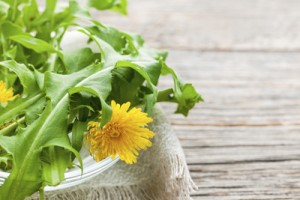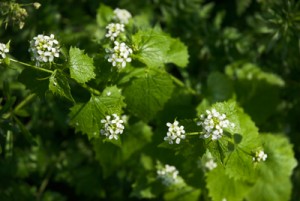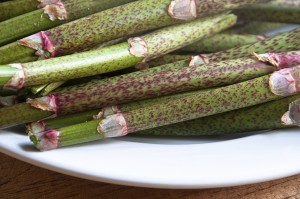Guest post by Nature Conservancy of Canada blogger Carly Dow
*NOTE: As with any edible plant, use extreme caution in ensuring the proper identification, harvesting method, and use before consuming.
Getting rid of invasive species has never been more…delicious. Invasive species management as a whole is extremely complex; however, cooking with certain edible invasives is a creative, fun, and healthy way to take action and reduce the population of species that have the potential to dominate and damage our native ecosystems.
Here, you’ll find a sample full-day menu (with recipes!) using one invasive species in each tasty dish, along with a brief description of the species. As you explore the topic more, you’ll find countless culinary options and scrumptious ways to knock down invasive numbers and keep your stomach happy at the same time (Cajun-style Rusty Crayfish, anyone?!).
INVASIVORE SAMPLE MENU
Breakfast – Dandelion Blossom Pancakes
- Common Dandelion, originally from Europe, is now very prevalent in North America (found in most Canadian provinces). Due to their highly mobile, wind-dispersed seeds, invasions can spread rapidly (Invasivore.org )
- This flowering “super plant” is rich in vitamins A and C, fiber, potassium, iron, calcium, magnesium, zinc, and phosphorus. Dandelion is a good place to get B-complex vitamins, trace minerals, organic sodium, and even vitamin D.
Lunch – Kudzu Vine Quiche with Curried Carrot & Burdock Soup
- Kudzu Vine is a perennial legume that originates from Japan. It was brought to the United States in 1876 for the World’s Fair. Known as “the vine that ate the south,” Kudzu vines can grow a foot in a day and cover everything in its path. It’s able to pull down power poles, break power lines, collapse buildings, and kill trees (ISCM).
- The leaves, shoots, blossoms, and roots of kudzu vine can all be prepared in different ways and consumed. Among other medicinal properties, Kudzu has been used successfully for centuries as a treatment for alcoholism.
- Common Burdock is native to Europe and came to North America via an accidental introduction. Burdock can bother, and lower the health as well as market value of, livestock. Its large leaves can shade out smaller plants and it also acts as a secondary host for pathogens that affect economically important plants (ISCM).
- Another “super plant”, burdock has numerous health benefits and is often used in traditional Chinese medicine. It is considered one of the best natural blood purifiers.
Dinner – Himalayan Balsam Falafel Pita with Garlic Mustard Salad
- Himalayan Balsam is native to India and the Himalaya, and was introduced as a garden ornamental in the 19th Century. This fast-growing annual can reach an impressive size over the growing season, rapidly out-competing other plants (ISCM).
- Young leaves and blossoms can be eaten, and seeds provide a pleasant, nutty taste.
- Garlic Mustard is a biennial plant native to Europe. It was introduced to North America for medicinal and culinary purposes.
- Leaves, roots, and stems are edible. Garlic mustard greens are very nutritious as they have substantial amounts of vitamins A, C, E, and some of the B vitamins.
Dessert – Strawberry Knotweed Pie
- Japanese Knotweed is native to Japan. This shrub-like perennial was introduced as an ornamental and has also been used to stabilize soil in coastal areas. It forms dense stands that shade and crowd out other vegetation, which in turn can alter wildlife habitats. The rhizomes and shoot growth can damage foundation walls, pavement, and drainage works (ISCM).
- Young, spring Japanese knotweed tastes similar to rhubarb, and makes a perfect partner with seasonal fresh strawberries in pie.
SOURCES
For all of these recipes and more, please visit:
All images from Thinkstock.
For more information on invasive species in Manitoba, please visit:







